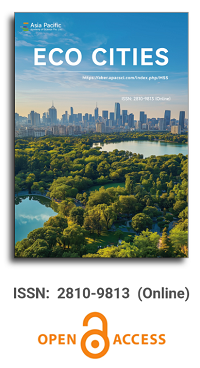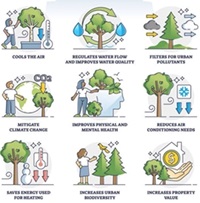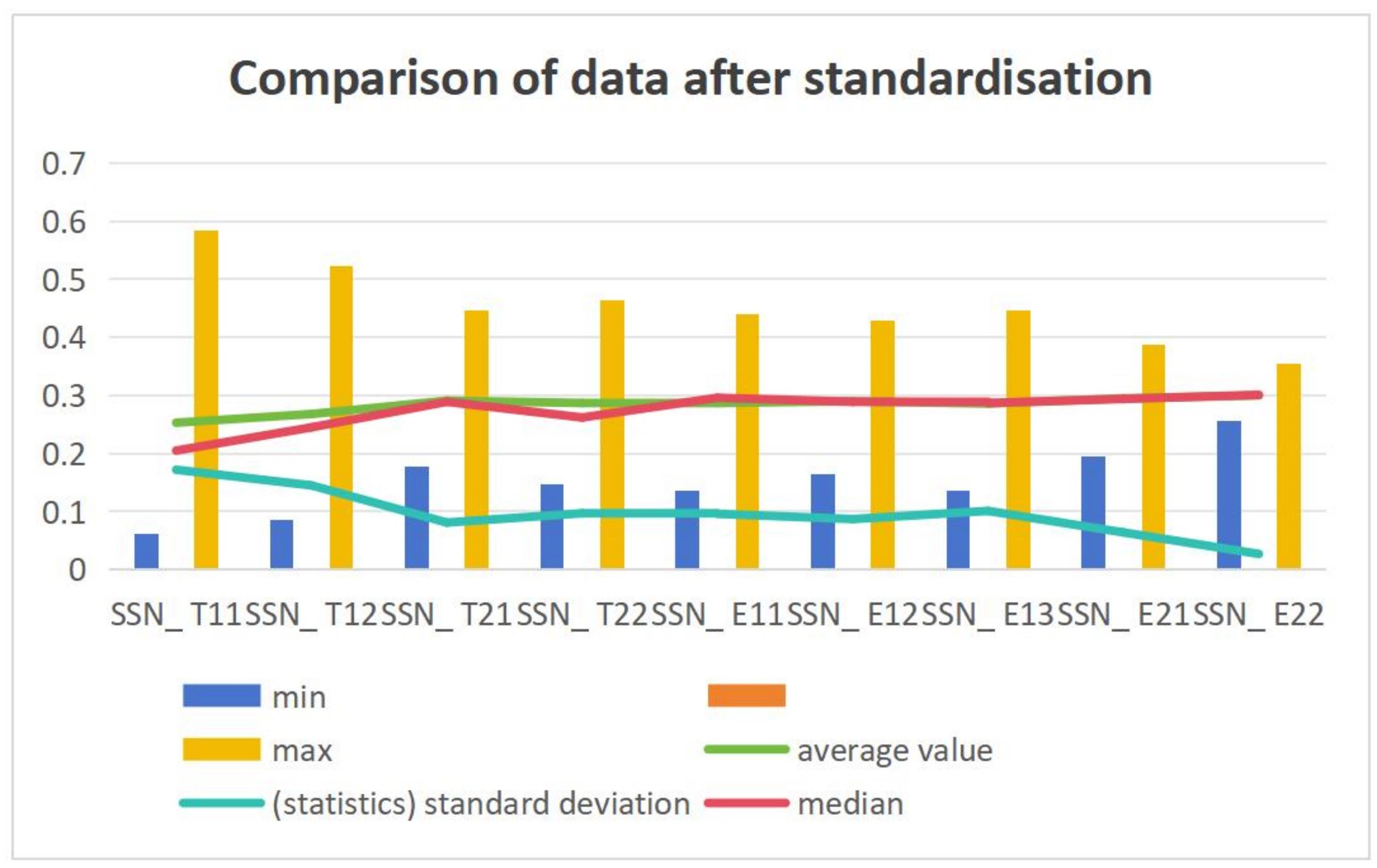


The impact of public transportation accessibility on apartment prices in Shiraz: A comparative study in a developing urban context
Vol 6, Issue 2, 2025
Download PDF
Abstract
Public transportation accessibility can significantly affect real estate prices. However, the extent of this impact can greatly vary depending on the specific urban context. This study investigates the impact of accessibility to public transportation on apartment prices in two distinct districts of Shiraz, Iran: District 1, which has the highest vehicle ownership per capita, and District 8, which has the lowest. Using 182 transactions from District 1 and 65 transactions from District 8, a hedonic pricing model was employed to analyze data on apartment prices, area, age, number of bedrooms, and distances to the nearest bus stop, subway station, park, hospital, school, and the Central Business District. The findings revealed distinct patterns across the districts. In District 8, where vehicle ownership per capita is low, accessibility to bus stops significantly influenced apartment prices. Conversely, accessibility to subway stations did not significantly impact apartment prices in either district, nor did bus stop accessibility in District 1. This study underscores the varying influence of public transportation accessibility on property prices in different urban contexts, particularly in relation to vehicle ownership levels.
Keywords
References
1. Cordera R, Coppola P, Dell’Olio L, et al. The impact of accessibility by public transport on real estate values: A comparison between the cities of Rome and Santander. Transportation Research Part A: Policy and Practice. 2019; 125: 308-319. doi: 10.1016/j.tra.2018.07.015
2. Leontev EV, Mayburov IA. Assessment of the Impact of Public Transport Accessibility on the Value of Urban Residential Real Estate. Journal of Applied Economic Research. 2021; 20(1): 62-83. doi: 10.15826/vestnik.2021.20.1.003
3. Rosiers FD, Lagana A, Thériault M, et al. Shopping centres and house values: an empirical investigation. Journal of Property Valuation and Investment. 1996; 14(4): 41-62. doi: 10.1108/14635789610153461
4. Colombo E, Stanca L. Measuring the monetary value of social relations: A hedonic approach. Journal of Behavioral and Experimental Economics. 2014; 50: 77-87. doi: 10.1016/j.socec.2014.03.001
5. Jim CY, Chen WY. External effects of neighbourhood parks and landscape elements on high-rise residential value. Land Use Policy. 2010; 27(2): 662-670. doi: 10.1016/j.landusepol.2009.08.027
6. Panduro TE, Veie KL. Classification and valuation of urban green spaces—A hedonic house price valuation. Landscape and Urban Planning. 2013; 120: 119-128. doi: 10.1016/j.landurbplan.2013.08.009
7. Ferlan N, Bastič M, Pšunder I. Influential Factors on the Market Value of Residential Properties. Engineering Economics. 2017; 28(2). doi: 10.5755/j01.ee.28.2.13777
8. Albacete X, Olaru D, Paül V, et al. Measuring the Accessibility of Public Transport: A Critical Comparison Between Methods in Helsinki. Applied Spatial Analysis and Policy. 2015; 10(2): 161-188. doi: 10.1007/s12061-015-9177-8
9. Holmgren J. An analysis of the determinants of local public transport demand focusing the effects of income changes. European Transport Research Review. 2013; 5(2): 101-107. doi: 10.1007/s12544-013-0094-0
10. Goodwin PB. Car ownership and public transport use: Revisiting the interaction. Transportation. 1993; 20(1): 21-33. doi: 10.1007/bf01099974
11. Alonso W. Location and Land Use. Harvard University Press; 1964. doi: 10.4159/harvard.9780674730854
12. Mills ES. An aggregative model of resource allocation in a metropolitan area. The American Economic Review; 1967.
13. Muth RF. Cities and housing; the spatial pattern of urban residential land use. Chicago: University of Chicago Press; 1969.
14. Debrezion G, Pels E, Rietveld P. The Impact of Railway Stations on Residential and Commercial Property Value: A Meta-analysis. The Journal of Real Estate Finance and Economics. 2007; 35(2): 161-180. doi: 10.1007/s11146-007-9032-z
15. Mohammad SI, Graham DJ, Melo PC, et al. A meta-analysis of the impact of rail projects on land and property values. Transportation Research Part A: Policy and Practice. 2013; 50: 158-170. doi: 10.1016/j.tra.2013.01.013
16. Rennert L. A meta-analysis of the impact of rail stations on property values: Applying a transit planning lens. Transportation Research Part A: Policy and Practice. 2022; 163: 165-180. doi: 10.1016/j.tra.2022.06.013
17. Zhou Y, Tian Y, Jim CY, et al. Effects of Public Transport Accessibility and Property Attributes on Housing Prices in Polycentric Beijing. Sustainability. 2022; 14(22): 14743. doi: 10.3390/su142214743
18. Martínez LM, Viegas JM. Effects of Transportation Accessibility on Residential Property Values. Transportation Research Record: Journal of the Transportation Research Board. 2009; 2115(1): 127-137. doi: 10.3141/2115-16
19. Camins-Esakov J, Vandegrift D. Impact of a light rail extension on residential property values. Research in Transportation Economics. 2018; 67: 11-18. doi: 10.1016/j.retrec.2017.04.004
20. Senior ML. Impacts on travel behaviour of Greater Manchester’s light rail investment (Metrolink Phase 1): evidence from household surveys and Census data. Journal of Transport Geography. 2009; 17(3): 187-197. doi: 10.1016/j.jtrangeo.2008.11.004
21. Wagner GA, Komarek T, Martin J. Is the light rail “Tide” lifting property values?. Evidence from Hampton Roads, VA. Regional Science and Urban Economics. 2017; 65: 25-37. doi: 10.1016/j.regsciurbeco.2017.03.008
22. Bowes DR, Ihlanfeldt KR. Identifying the Impacts of Rail Transit Stations on Residential Property Values. Journal of Urban Economics. 2001; 50(1): 1-25. doi: 10.1006/juec.2001.2214
23. Dewees DN. The effect of a subway on residential property values in Toronto. Journal of Urban Economics. 1976; 3: 357-369. doi: 10.1016/0094-1190(76)90035-8
24. Hess DB, Almeida TM. Impact of Proximity to Light Rail Rapid Transit on Station-area Property Values in Buffalo, New York. Urban Studies. 2007; 44(5-6): 1041-1068. doi: 10.1080/00420980701256005
25. Forouhar A, Hasankhani M. The effect of Tehran metro rail system on residential property values: A comparative analysis between high-income and low-income neighbourhoods. Urban Studies. 2018; 55(16): 3503-3524. doi: 10.1177/0042098017753089
26. Li Z. The impact of metro accessibility on residential property values: An empirical analysis. Research in Transportation Economics. 2018; 70: 52-56. doi: 10.1016/j.retrec.2018.07.006
27. Yang L, Zhou J, Shyr OF, et al. Does bus accessibility affect property prices?. Cities. 2019; 84: 56-65. doi: 10.1016/j.cities.2018.07.005
28. Wang Y, Potoglou D, Orford S, et al. Bus stop, property price and land value tax: A multilevel hedonic analysis with quantile calibration. Land Use Policy. 2015; 42: 381-391. doi: 10.1016/j.landusepol.2014.07.017
29. Munoz-Raskin R. Walking accessibility to bus rapid transit: Does it affect property values?. The case of Bogotá, Colombia. Transport Policy. 2010; 17(2): 72-84. doi: 10.1016/j.tranpol.2009.11.002
30. Cervero R, Kang CD. Bus rapid transit impacts on land uses and land values in Seoul, Korea. Transport Policy. 2011; 18(1): 102-116. doi: 10.1016/j.tranpol.2010.06.005
31. Deng T, Ma M, Nelson JD. Measuring the impacts of Bus Rapid Transit on residential property values: The Beijing case. Research in Transportation Economics. 2016; 60: 54-61. doi: 10.1016/j.retrec.2016.08.005
32. Pang H, Jiao J. Impacts of Beijing Bus Rapid Transit on Pre-owned Home Values. Journal of Public Transportation. 2015; 18(2): 34-44. doi: 10.5038/2375-0901.18.2.3
33. Soltani A, Zali N, Aghajani H, et al. The nexus between transportation infrastructure and housing prices in metropolitan regions. Journal of Housing and the Built Environment. 2024; 39(2): 787-812. doi: 10.1007/s10901-023-10085-3
34. Kasraian D, Li L, Raghav S, et al. Regional transport accessibility and residential property values: The case study of the Greater Toronto and Hamilton area. Case Studies on Transport Policy. 2023; 11: 100932. doi: 10.1016/j.cstp.2022.100932
35. Qiu F, Tong Q. A spatial difference-in-differences approach to evaluate the impact of light rail transit on property values. Economic Modelling. 2021; 99: 105496. doi: 10.1016/j.econmod.2021.03.015
36. Mulley C. Accessibility and Residential Land Value Uplift: Identifying Spatial Variations in the Accessibility Impacts of a Bus Transitway. Urban Studies. 2013; 51(8): 1707-1724. doi: 10.1177/0042098013499082
37. He H, Ponce-Lopez R, Shaw J, et al. Representing Accessibility: Evidence from Vehicle Ownership Choices and Property Valuations in Singapore. Transportation Research Record: Journal of the Transportation Research Board. 2019; 2673(2): 724-733. doi: 10.1177/0361198119825831
38. Huang N, Li J, Ross A. The impact of the cost of car ownership on the house price gradient in Singapore. Regional Science and Urban Economics. 2018; 68: 160-171. doi: 10.1016/j.regsciurbeco.2017.10.009
39. Rolf Moeckel, Di Yang. Car Ownership and the Impact of Built Environment, Demographics and Transport Systems. Journal of Civil Engineering and Architecture. 2016; 10(5). doi: 10.17265/1934-7359/2016.05.008
40. Kawamura K, Mahajan S. Hedonic Analysis of Impacts of Traffic Volumes on Property Values. Transportation Research Record: Journal of the Transportation Research Board. 2005; 1924(1): 69-75. doi: 10.1177/0361198105192400109
41. Chwiałkowski C, Zydroń A. The Impact of Urban Public Transport on Residential Transaction Prices: A Case Study of Poznań, Poland. ISPRS International Journal of Geo-Information. 2022; 11(2): 74. doi: 10.3390/ijgi11020074
42. Kashkooli HN, Hajipoor K, Arasteh M, et al. The Impact of Subway Station Proximity on Apartment Prices in Shiraz. Transportation in Developing Economies. 2024; 10(2). doi: 10.1007/s40890-024-00198-x
43. Shiraz Municipality. Shiraz’s transportation and traffic master plan. Available at: https://transportation.shiraz.ir/ (accessed on 2 February 2025).
44. Shiraz Municipality. Shiraz’s Statistical Yearbook. Available online: https://shaffaf.shiraz.ir/Modules/ShowFramework.aspx?FrameworkPageType=SEC&RelFacilityId=66&ReportID=98&stemplateid=2663 (accessed on 2 February 2025).
45. O’Sullivan S, Morrall J. Walking Distances to and from Light-Rail Transit Stations. Transportation Research Record: Journal of the Transportation Research Board. 1996; 1538(1): 19-26. doi: 10.1177/0361198196153800103
Supporting Agencies
Copyright (c) 2025 Author(s)
License URL: https://creativecommons.org/licenses/by/4.0/

This site is licensed under a Creative Commons Attribution 4.0 International License (CC BY 4.0).

Chinese Academy of Sciences, China
Indexing & Archiving
Asia Pacific Academy of Science Pte. Ltd. (APACSCI) specializes in international journal publishing. APACSCI adopts the open access publishing model and provides an important communication bridge for academic groups whose interest fields include engineering, technology, medicine, computer, mathematics, agriculture and forestry, and environment.



.jpg)

.jpg)



